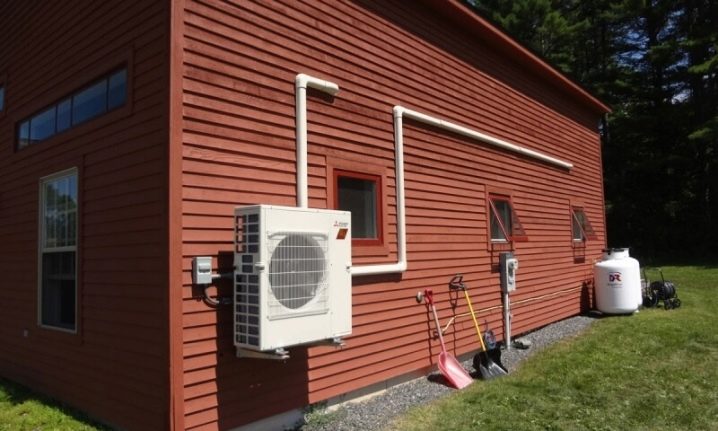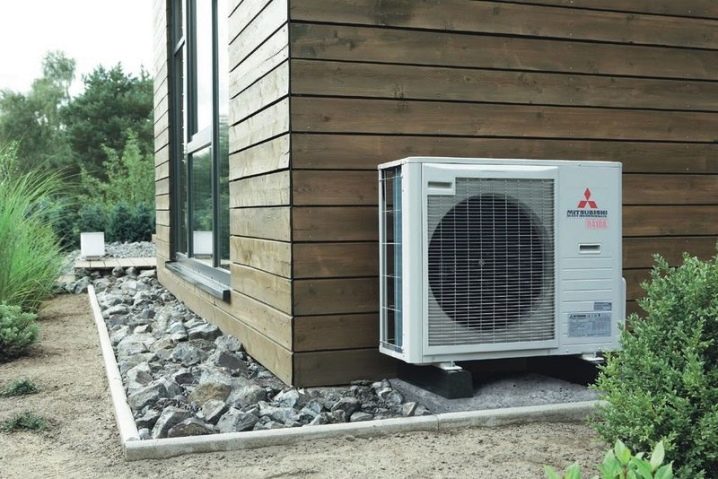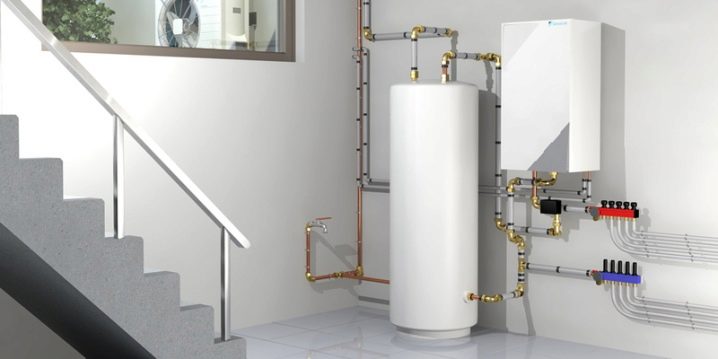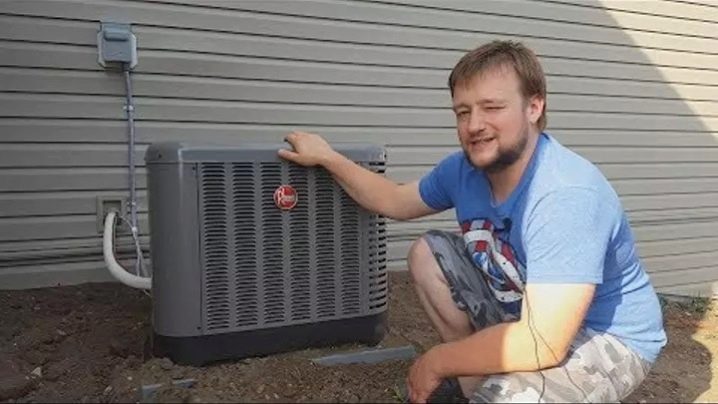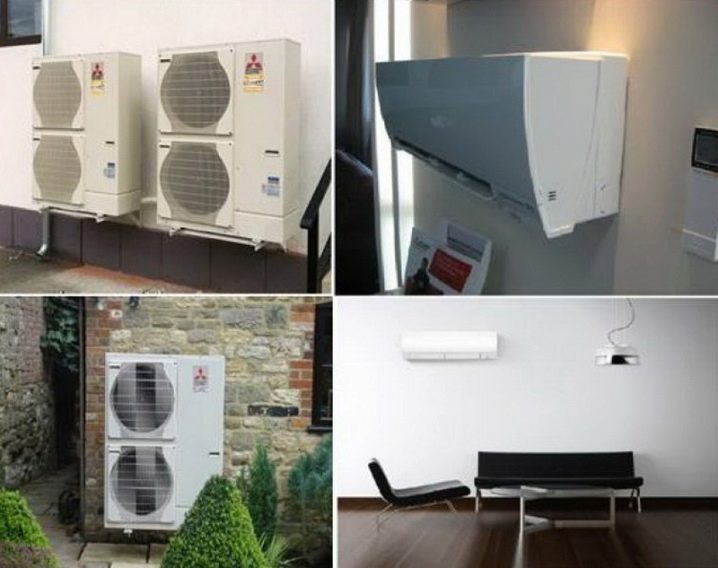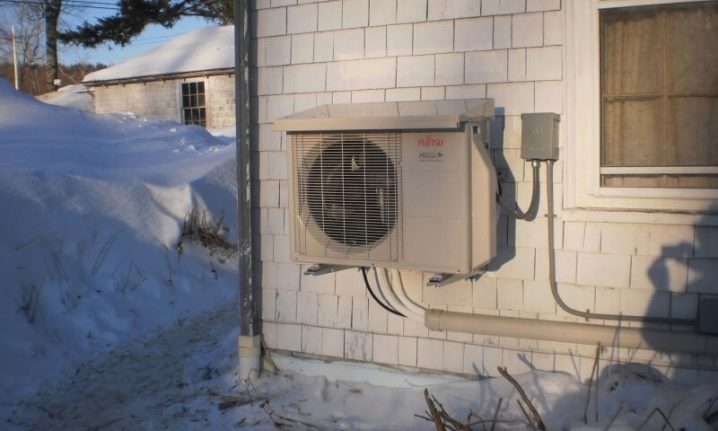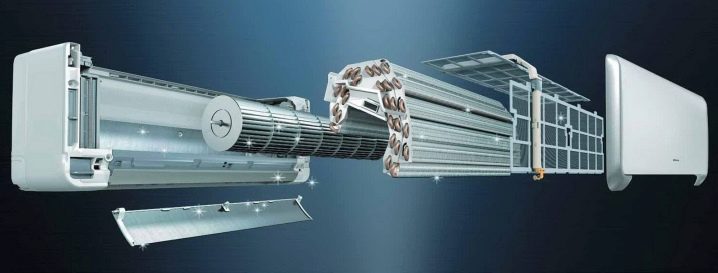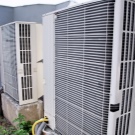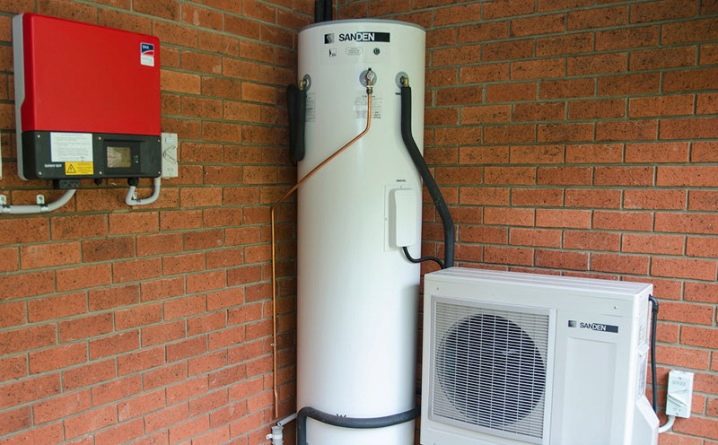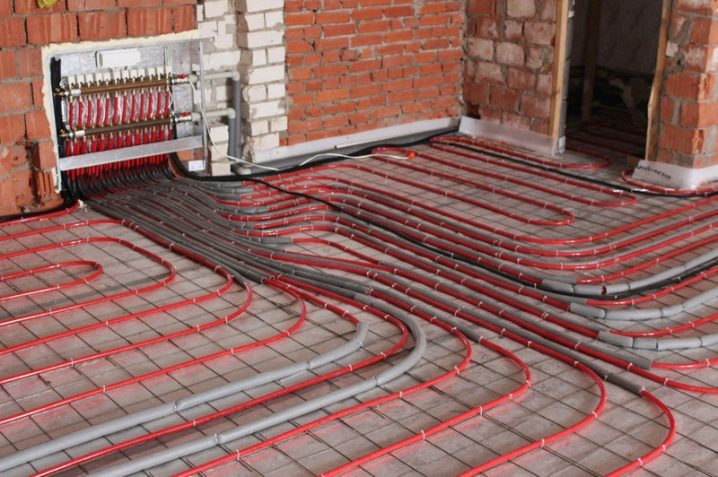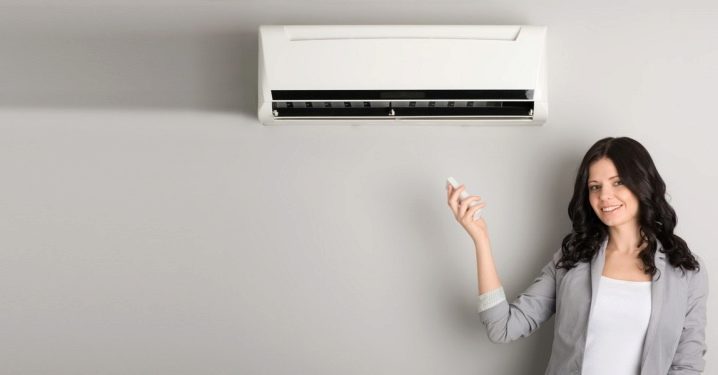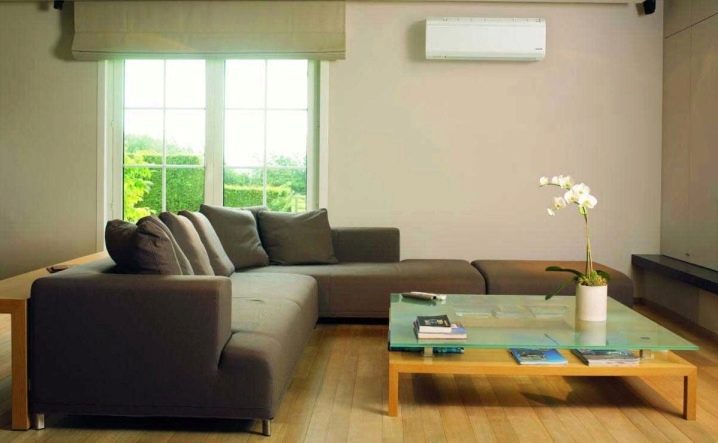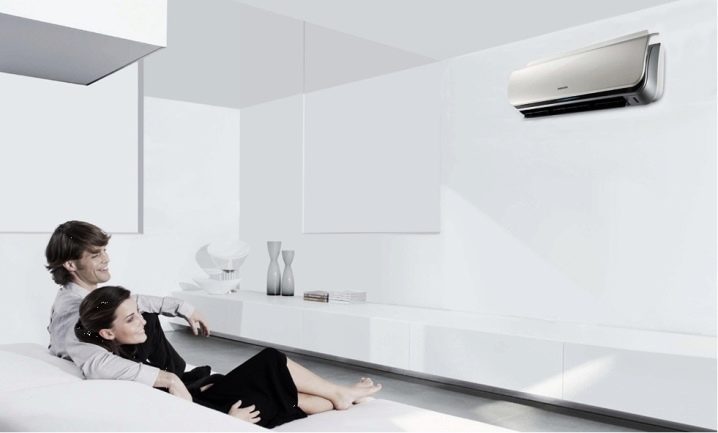Heating the house with air conditioning: features, advantages and disadvantages

Heating air conditioning in the winter is becoming increasingly popular. This is due to the emergence of a new generation of devices equipped with a "winter-summer" function and capable of carrying out a full heating of housing. The cost of such devices is somewhat higher than the cost of traditional models, but the money spent quickly pays off during the cold season.
The expediency of the process
Air conditioners with a heating function are structurally different from their older counterparts. The devices are equipped with a heat pump, which makes them very economical: one kilowatt of electricity consumed for operating the air conditioner gives 2.5 to 4.2 kW of heat at the output.Devices can effectively heat a room at ambient temperatures ranging from 0 to -15 degrees, but more powerful specimens can easily cope with 30 degree frosts. For comparison: the oil heater, consuming the same kilowatt of electricity, is able to give only 0.95 kilowatts of heat.
From this it follows that the means for heating with the help of an air conditioner goes two times less than when heating a house with a heater. However, it is advisable to choose an air conditioner as a heat source only in non-gasified regions, or in places where expensive liquefied propane is used instead of natural gas. In other cases, heating with an air conditioner is certainly more expensive than heating with natural gas, and preference should be given in favor of the latter.
Principle of operation
The heating process by air conditioning is fundamentally different from the essence of the heating process by the electric heater. And if in heaters the electric power is spent directly on the heating of heating elements, in air conditioners it is exclusively for the operation of compressor equipment, fans and dampers. The principle of air conditioning is heatingthe refrigerant in the outdoor unit, with its further injection by means of a compressor into the indoor unit located in the room. Further, by means of a fan, heated air, the direction of which is determined by the dampers, is fed into the room and provides its heating.
Heating of outdoor air occurs in the process of lowering its temperature. For example, the air conditioner took the air at a temperature of -15 degrees, and gave it back to the street in an even more cooled state, with a temperature of -25. The difference of 10 degrees was used for heat transfer, which resulted in the formation of warm air, which was supplied by the compressor to the indoor unit. However, with this method of heating, it is important to regularly monitor external temperatures and in no case prevent the operation of the device if the temperature falls below the maximum allowable. The lower temperature limit is indicated in the technical data sheet of the product and cannot be ignored by the consumer.
Otherwise, the equipment will start working for wear and quickly fail. However, the latest models of air conditioners with the heating function are equipped with a special unit that heats thickened oil, which eliminates the risk of overloading compressor equipment and turning off the device.Also solved the problem of frosting drainage hoses, which was fraught with condensate leaking into the house. On modern models, low-power heaters are installed, which protect the pipes from freezing and prevent condensation from turning into ice. All devices are equipped with a safety interlock system that will automatically turn off the device in case of a decrease in the external temperature below the maximum permissible level.
Advantages and disadvantages
The growing popularity of indoor heating with air conditioners due to a number of undeniable advantages of this method:
- the principle of heating does not imply the combustion of oxygen, as occurs when electric heaters operate. This contributes to maintaining a comfortable microclimate in the room and eliminates excessive air drying;
- heating with an air conditioner is much more economical than heating with an oil heater;
- simplicity in control of the device and the absence of risk to get a burn allows you to use the air conditioner in a house where there are small children and animals without fear;
- high efficiency, exceeding this parameter of electric heaters by 2-3 times, allows you to effectively warm the space, while spending less electricity;
- forced ventilation equipment helps to warm the room almost instantly;
- multifunctionality of the device due to its use at any time of the year. In winter and in the off-season, the appliance will work for heating, and in the summer period - to cool the dwelling;
- quick installation process and wide availability of service;
- simple care. You can clean and rinse the split system by yourself;
- acceptable cost. The purchase of an air conditioner with a heating function will cost a little less than the purchase of a gas heating boiler;
- full environmental safety of the heating system due to the absence of CO2 emissions and other products of combustion, which, for example, are emitted when burning gas in open-type boilers.
The disadvantages of this type of heating include reducing the efficiency of the air conditioner.which occurs in direct proportion to the decrease in external temperatures. Models that can work effectively in the range of -15 to -30 degrees, are quite expensive. Another disadvantage is the effect of uneven heating.For example, with a high arrangement of split systems, the floor in the room will remain cold. However, there is a way out of this situation. For a more uniform heating of the entire room, climate control sensors can be purchased, which automatically redirect warm flows to the right areas of the room.
Split system with heat pumps
For more efficient operation of the air conditioner for heating, heat pumps are additionally included in the system. The power of the heat pump is developed for each room individually and depends on the size of the room and the power of the air conditioner. The device, equipped with additional heating amplifiers, is able not only to heat the room air, but also to provide the residents with hot water. Provision of hot water is as follows: freon, heated as a result of heat transfer, goes to the heat exchanger, where it gives its heat to water. Water, in turn, passes through the duct pipes located in the heat pump circuit. Then the hot water comes out of the split system and goes through the pipeline to the consumer. In the summer months, the system works like a normal cooler.
The main advantages of split-systems equipped with heat pumps is high efficiency. So, with the consumption of one kilowatt of electricity, the device is capable of producing 5 kW of heat. This is much higher than when heated with air conditioning, not equipped with a heat pump and operating in standard mode. These complexes are called inverters and have proven to be one of the most economical and efficient heating systems. Most devices can operate at air temperatures of -25 degrees, and their installation does not require complex work on the arrangement of pipelines and chimneys, the installation of heating radiators and the construction of boiler rooms. The device takes up very little space, does not clutter up the space and blends harmoniously into the modern interior.
Criterias of choice
From the right choice of air conditioner will depend on the quality of the heating room, which directly affects the comfort of housing. Before you purchase a system, you should clearly define its functional responsibilities. In case the arrangement of hot water supply is supposed, it is necessary to stop the choice on the invertor installations equipped with the additional block hydromodule.Crucial to the choice of air conditioning have external air temperature in the winter. And if in the southern regions of the country you can limit yourself to acquiring the traditional model, then in the conditions of a sharply continental climate with night temperatures falling to –30 degrees, you should buy a serious device equipped with a heat pump and a system to protect against freezing of oil and condensate.
When choosing a device with a hydraulic unit, it should be remembered that if the device is installed outside, then it will be necessary to warm it for the winter. This especially applies to country houses in which living in the winter period is carried out periodically or completely absent. With the internal arrangement of the hydraulic unit, the device can be connected to the "warm floor" system and radiators. Installation of such equipment, of course, will cost certain costs, but they will quickly pay off during the operation of the device.
Owner reviews
Based on the personal experience of owners of private homes that use air conditioning as a heating system, a large number of positive reviews can be noted. There is a high efficiency of the device and a significant reduction in heating costs.Some consumers say that it is cheaper to heat a house with an air conditioner than when using central heating. This is especially true in those regions of the country where the tariffs for district heating are greatly overestimated. Attention is also drawn to the fact that, despite the seeming frivolity of such heating, the air conditioner heats the room just as well as a gas boiler and is far superior to electric heaters in its efficiency.
Consumers whose homes are connected to central heating also use split-systems in spring and autumn - during the period when the centralized heat is either already disconnected or not yet connected. In this regard, the split system is very convenient for families with small children, who need stable thermal comfort, independent of the start and end of the heating season. However, there are some drawbacks of this method of heating. Some consumers complain about the low efficiency of traditional models when the external temperatures fall below -5 degrees and speak of the need to include additional heat sources.However, in this case we are most likely talking about old models, which are designed more for air conditioning than for heating.
Heating the house with air conditioning is becoming more common. This is primarily due to the weak gasification of a large part of the country, especially the territories of Eastern Siberia and the Far East. The second reason is the possibility of creating an autonomous heating system, which can be used regardless of the start of the heating season, in its sole discretion. The third reason for the transition of owners of private houses to split-heating is due to the multifunctionality of the device, which allows it to be used as a cooler in summer and as a heater in winter.
On whether it is possible to heat the house with air conditioning, see the following video.
